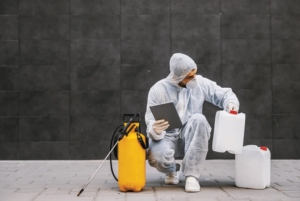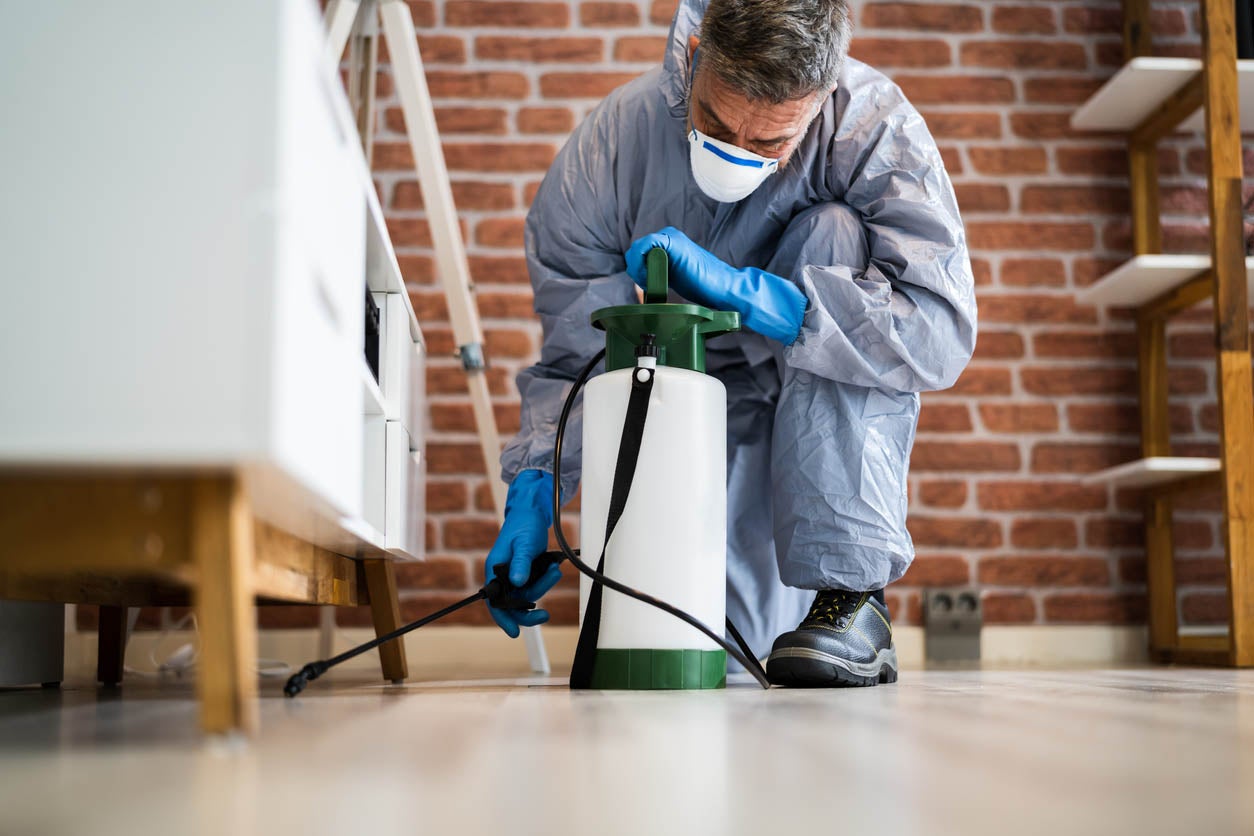Pests are unwanted organisms that damage or interfere with our fields and orchards, landscapes, and wildlands; cause injury to animals; displace native plants; or disrupt ecosystem processes. A pest may be a plant, an insect, disease pathogen, nematode, or vertebrate. For more information, click the link https://armispestmanagement.com/ provided to proceed.
IPM strategies begin with prevention and include cultural, mechanical, biological and, if necessary, chemical control options. Treatments are used as little as possible and in the least volatile formulations to minimize their impact on non-target plants and organisms.

Pests can damage or devalue plants, food sources, lawns, gardens, and human structures. They also displace native species, alter soil health and nutrient content, and negatively affect terrestrial and aquatic ecosystems.
To control pests, schools need to implement Integrated Pest Management (IPM). IPM is an environmentally friendly approach that reduces children’s exposure to harmful chemicals and provides a safer learning environment. Schools can save money in the long run by implementing IPM and avoiding costly pesticide treatments.
The first step in an IPM plan is monitoring or scouting the landscape, field, garden, or building on a regular basis to identify pests and their damage. This information helps determine whether the problem warrants treatment and what methods to use. Monitoring includes correcting cultural problems, using mechanical or biological controls, and when necessary, applying chemicals that are specifically labeled for the particular pest.
Preventing pests involves selecting plants that are well-adapted to the local environment and planting them in their best locations to provide the right amount of sunlight, water, and nutrients. Planting trees, shrubs, and flowers with the proper size, shape, and color is important to the health of the planting and its resistance to diseases and pests.
Another important preventive measure is inspecting the planted landscape regularly for signs of pests, including eggs, larvae, and adult insects. Inspecting plants in the landscape or at a school regularly will help to identify pests early, when they are easier to treat. When IPM monitoring reveals that a pest is present, the next step in an IPM plan is to set an action threshold. A defined threshold focuses the size, scope, and intensity of any control measures.
Some pests have natural predators or parasitoids that keep their numbers under control. Other pests, such as Japanese beetles and gypsy moths, have no natural predators and must be managed by humans. Biological control methods, such as the introduction of pathogenic bacteria that destroy or debilitate the pests, are used to manage these pests.
Crop rotation, the practice of planting different types of crops in sequences over time, can reduce the number and diversity of pests in a landscape or crop. This practice can also slow the spread of some pests by preventing them from migrating between crops or finding new host plants.
Suppression
Pests include undesirable plants (weeds), vertebrate animals, invertebrates (insects, mites, snails, nematodes), bacteria, fungi, viruses, or other pathogens that damage, devalue, or displace desirable crops, lawns, and gardens, or harm human health or property. They may also disrupt terrestrial or aquatic ecosystems.
Suppression methods seek to control or eliminate pests by removing or blocking access to essential elements required for pest growth and reproduction, such as food, water, and shelter. Some suppression techniques include cultural practices, soil modifications, and plant varieties that are resistant to a particular pest.
Biological control includes introducing or releasing organisms that naturally prey on or parasitize pests to reduce their numbers. This is a key component of integrated pest management (IPM), which couples preventive methods with biological controls. It is important to purchase organisms from a reputable source and learn how, when, and where to release them to ensure success. For example, a purchased predatory lady beetle from California will likely not perform well in North Carolina because it instinctively flies far away from the source of its food.
Chemicals are sometimes necessary for successful pest management, especially when other control options fail. They can be natural or synthetic, and they include herbicides to kill weeds, insecticides to kill insects, and fungicides to control diseases. Chemicals must be used in accordance with label instructions to minimize risks to people and beneficial insects.
IPM also includes a method called “pesticide rotation,” which involves planting different crop types in consecutive years to exclude certain pest species. For example, brassicas and cruciferous vegetables grow best in sequences that exclude cabbage pests; strawberry plants thrive when planted in fields that do not contain potato pests. This method is a good alternative to eradication, which can be expensive, time-consuming, and disruptive to the environment. Also, it is important to keep records of pest problems and the actions taken to manage them. These records will be valuable in determining whether IPM has been successful and if additional steps are needed. This will help prevent the overuse of pesticides. Also, as landscape plants mature, the shading they create can change the relationship between them and their pests, so reevaluation of IPM strategies is important.
Eradication
In the context of pest control, eradication refers to destroying an entire pest population. Eradication may be accomplished by using a combination of methods, such as chemical and non-chemical controls. Non-chemical methods include sanitation, physical controls, biological controls, and cultural practices.
Eradication requires a thorough understanding of the pest’s life cycle, its behavior, and the environmental factors that influence its growth. Accurate identification of the pest is also important. This information will help determine the best method for controlling it.
When a pesticide application fails, it could be because the pest is resistant to that particular chemical, or because the wrong pesticide was used. In addition, the pest may be at a stage of its life cycle when it is less susceptible to the chemical, or the location where it is found is unfavorable for spraying.
If the pesticide was applied correctly, it may not have been effective because of bad weather conditions, or because it wasn’t applied at the right time in the insect’s life cycle. The pest may also have moved to another part of the field, or it may have migrated from an area that was treated.
Biological controls are the use of organisms that naturally reduce or eliminate pest populations, such as predatory insects that feed on pests or parasites that lay eggs in or on the pest. This type of control is useful for a wide variety of crops. However, biological control is expensive, and it can be difficult to implement in large fields where many different species of pests are present.
The IAEA supports the development and transfer of radiation-based technologies, such as the sterile insect technique (SIT) and inherited sterility, to prevent insect-related risks to human and animal health, crop and livestock production and ecosystems. The IAEA’s Joint FAO/IAEA Centre of Nuclear Techniques in Food and Agriculture researches, develops and applies SIT, inherited sterility and other biological control techniques worldwide.
Integrated pest management (IPM) is a method for reducing pests and their damage to an acceptable level through the coordinated use of several control tactics. These tactics include prevention, suppression, eradication and monitoring.
Monitoring
The monitoring phase of IPM involves checking your crop regularly for pests and other damage. This includes making accurate identifications of the pests and assessing their abundance. It also involves recording your observations on a field data sheet that allows you to track pest populations and related crop injury over time. This information can help you determine when it’s necessary to control them.
The goal of monitoring is to identify the presence and intensity of pests and their damage in your greenhouse crops and growing area. This helps you decide whether and when to apply preventive or suppression controls to keep the pests at or below the economic injury level (EIL). It also allows you to evaluate your choice of control tactics for effectiveness and risk.
A variety of pests can be found in greenhouse crops and growing areas, including insects, diseases, nematodes, and weeds. Some are continuous, meaning they are always present, while others are sporadic or migratory and require control only under certain conditions.
Depending on the type of greenhouse, crop, and management practices used in the greenhouse, different methods can be used to monitor for pests. Typically, the most effective way to monitor is through visual observation. This includes searching plants for pests and carefully examining plant parts, such as leaves and stems. This technique is best for pests that are hard to detect by other means, such as aphids and some psyllids.
You can also use synthetic pheromones to monitor for pest populations. These are manufactured copies of the natural pheromones that insect species release to attract each other or to mark territory. By combining these with mating disruption or mass trapping techniques, you can reduce pest numbers and improve control.
The Ministry of Agriculture has an extensive pest monitoring network that allows us to closely monitor the number and severity of insect, disease, and weed populations across Saskatchewan. These results are used to support research initiatives and to inform trade discussions. They are also archived and used to provide historical trends to allow us to better understand how pests relate to climate changes, agri-business activities, and other factors that influence their abundance.




